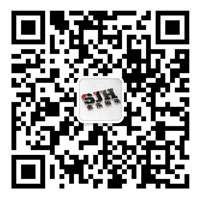Due to its own quality and external conditions, the load-bearing capacity, rotational accuracy, and friction reduction performance of deep groove ball bearings will change during use. When the performance indicators of the bearings are lower than the requirements of use and cannot work normally, abnormal phenomena such as machine equipment stopping operation and functional damage will occur. If effective maintenance procedures are adopted in bearing assembly and disassembly, lubrication, pollution prevention, personnel training, online testing and timely troubleshooting, the above-mentioned faults can be avoided. When installing and disassembling bearings, attention should be paid to using appropriate tools and methods. Bearing installation is a strict maintenance task, and the quality of installation directly affects the accuracy, service life, and performance of bearings.
Therefore, it is necessary to use specialized bearing tools for installation and disassembly, which can simplify the installation process and avoid damaging the bearings and related shafts, bearing seats, and seals. The bearing installation tool must be suitable for all bearing specifications and models. For example, mechanical tools such as buffer rings are usually used, and small bearings can be installed by heating steel plates, ovens, or induction furnaces. Heating causes the inner ring of the bearing to expand and fit onto the shaft. As the bearing cools and the inner ring shrinks, a firm fit between the bearing and the shaft is achieved. This is one of the methods for bearing installation - heating fit, which is suitable for bearings with large interference.
Alternatively, a pressure fit can be used, which involves using a cylindrical sleeve to push against the collar and applying force to the collar with interference fit. For the installation of tapered hole bearings, locking nuts or heating installation methods are generally used. For the installation of thrust bearings, the shaft rotation is mostly the case, and the inner ring and shaft are in an interference fit, while the outer ring and bearing seat are in a clearance fit. Therefore, the central shaft ring of the bidirectional thrust bearing should be fixed on the shaft to prevent rotation relative to the shaft. In addition, disassembly tools such as bearing pullers can effectively prevent damage to parts near the bearings. During installation and disassembly, do not use a hammer to directly strike the bearing collar.
Proper lubrication to extend the service life of bearings is also an important maintenance procedure, which involves using an appropriate amount of qualified clean lubricating oil or grease to maintain lubrication of the bearings. Different lubrication methods should be adopted according to the speed and load. The properties of lubricants include viscosity, ability to form oil films, and viscosity, which refers to lubricating grease. In terms of lubricant selection, the criteria include the operating temperature range, speed, environment, and other operating conditions of the equipment. Bearings used under normal speed and temperature conditions typically use lubricating grease. For higher speeds or when heat must be dissipated from the bearings, a continuous supply of clean lubricating oil circulation system is used. Lubricating grease has good adhesion to prevent contamination and moisture.
The interval between the replacement of lubricating oil and grease depends on the working temperature and other environmental factors. Measures for pollution prevention and control: Pollutants such as water or chemicals can corrode the surface of bearings or damage lubricants. Seals can effectively prevent pollutants from entering bearings and extend their lifespan. Friction contact and frictionless clearance or labyrinth sealing are two basic forms. If one form of sealing has little effect, the combination of the two forms can often enhance sealing performance. Cleanliness is a key factor in the use of bearings, and it is necessary to keep the working range of bearings free of pollutants. Dust, cutting dust, and other hard particles, abrasive particles, as well as soft particles such as fiber debris, paper scraps, and plastics, are all harmful substances. Solid particles can cause dents on the surface of the raceway, thereby disrupting lubrication conditions and accelerating wear.
At the same time, bearing tools, monitoring instruments, and maintenance technologies are constantly innovating and developing, and their technical content and complexity are also increasing, all of which require key training. Online monitoring can help maintenance personnel detect faulty bearings by promptly troubleshooting them with vibration meters, digital thermometers, stethoscopes, and other simple instruments. The use of various types of fault monitoring instruments for online monitoring of multiple parameters is very effective in timely and accurate detection of hidden fault points.
Copyright © 2023 Shandong Jinhong Bearing Technology Co., Ltd XML

Save image, WeChat recognizes QR code
WeChat account:18865223456
(Click on WeChat to copy and add friends)